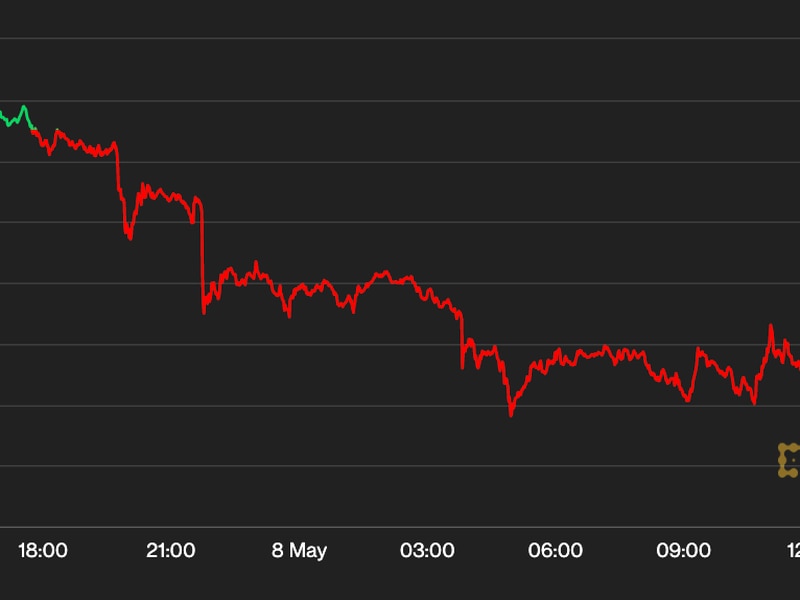Bitcoin Trades Flat Even as Fed Signals Inflation-Boosting Balance Increase

View
- The Fed’s decision to expand its balance sheet is seen as a long-term positive development for bitcoin by crypto market experts. However, it hasn’t yet buoyed the cryptocurrency’s price, which is consolidating around $8,200.
- Short-term technical charts are calling a bullish move to the 200-day moving average, currently located above $8,600.
- The case for a corrective rally to $8,600 would weaken if prices drop below $7,763, invalidating Monday’s bullish candlestick pattern.
Bitcoin (BTC) is lacking a clear directional bias on Wednesday, despite the Federal Reserve’s (Fed) plan to restart its inflation-boosting balance sheet expansion program.
The top cryptocurrency is currently trading largely unchanged on the day below $8,200 on Bitstamp and has spent a better part of the last 24 hours consolidating in the narrow range of $8,100 to $8,300.
The cryptocurrency is failing to draw bids even though Federal Reserve’s chairman, Jerome Powell, said on Tuesday that the U.S. central bank will soon start expanding its balance sheet again in an effort to avoid a repeat of the recent turmoil in the money markets.
Short-term rates shot up as high as 10 percent in September, threatening to disrupt the overall lending system and forcing the Fed to inject hundreds of billions of dollars via market repurchase agreements (repo operations) to keep interest rates in the intended range of 1.75–2 percent.
Powell said the Fed may have to keep pumping money into the financial markets by buying securities in the coming days in order to ensure the smooth functioning of the “overnight” or short-term lending markets.
The markets believe the Fed’s latest operation is nothing but round four of quantitative easing (QE) – central bank purchases government securities or other securities from the market in order to increase the money supply and encourage lending and investment. The Fed conducted three rounds of quantitative easing between 2009 and 2015.
Many observers are of the opinion that the QE programs are inflationary in nature and consider bitcoin as a hedge against such policies.

Bitcoin skeptic and CEO of Euro Pacific Capital Peter Schiff tweeted in June that QE is the new normal and will lead to dollar sell-off and hyperinflation.

Travis Kling, a former equities Portfolio Manager and now the head of a crypto asset management firm Ikigai tweeted earlier today that bitcoin is insurance against irresponsible monetary policies like QE.
The argument has merit as bitcoin’s monetary policy is fixed and deflationary in nature – its supply is reduced by half every four years via mining reward halving.
Also, QE creates hyperinflation in financial assets like sovereign bonds, as pointed out by Daniel Lacalle, Chief Economist and Investment Officer at Tressis Gestión – a Madrid-based asset management company.

Fed’s purchases of government securities will push up bond prices, triggering a drop in yields, possibly leading to increased investor demand for high-yielding assets like bitcoin.
After all, government bonds in most developed countries are already offering negative yields and bitcoin is the best performing asset of 2019 with triple-digit gains.
And last but not least, the crypto market community believes BTC has an innate intrinsic value like gold, which has a strong positive correlation with the Fed’s balance sheet size.

- As can be seen, the Fed’ s balance sheet size expanded from $865 billion in August 2007 to $4.4 trillion by the end of July 2015.
- Gold’s price rose from lows near $700 seen in November 2008 to a record high of $1,920 in November 2012.
- The positive correlation ended in 2013 as the Fed began preparing the markets for a taper (slowdown in bond purchases). The QE program ended in October 2014 and the central bank began trimming its balance sheet size from the second half of 2017.
- Interestingly, gold picked up a strong bid in November last year as markets began pricing in the prospects of US recession and aggressive Fed easing.
All-in-all, the Fed’s decision to expand its balance sheet could be a long-run positive for bitcoin, as tweeted by popular analyst @IvanOnTech.
So far, however, bitcoin has struggled to find takers, as noted earlier. That said, the short-term technical charts continue to call a move higher to $8,600.
Daily chart

Bitcoin created a bullish outside bar candlestick pattern on Monday, warning of an impending a move higher. So far, the follow-through to Monday’s bullish candle has been dismal – the cryptocurrency remains below $8,313 (Monday’s high).
Even so, the bullish prospects remain intact, as prices are hovering well above the bullish candle’s low of $7,763. Further, the MACD histogram has crossed above zero, confirming a bullish reversal.
Meanwhile, the daily line chart is reporting a bullish divergence of the relative strength.
The cryptocurrency appears on track to test resistance at $8,607 (200-day moving average). A UTC close higher would expose the next hurdle lined up above $8,800 and near $9,000.
The short-term bullish case would weaken only if prices find acceptance below Monday’s low of $7,763.
Disclosure: The author holds no cryptocurrency assets at the time of writing.
Federal Reserve image via CoinDeskArchives; charts by Trading View









